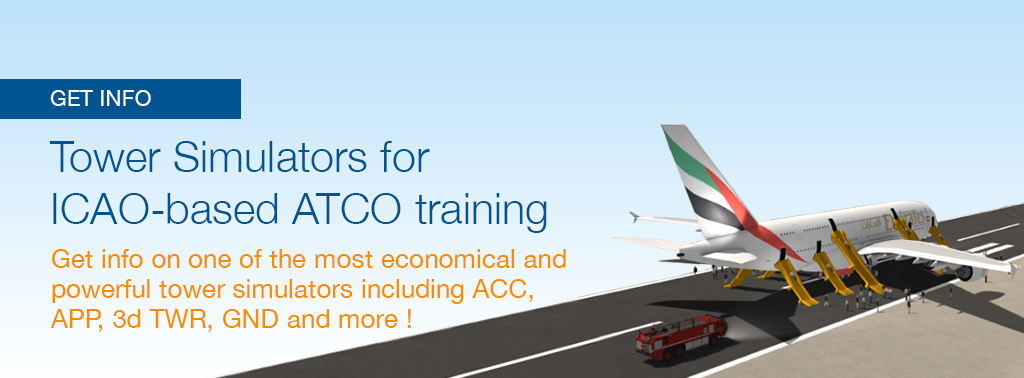In air traffic services, two protagonists hold a significant position: Pilots and Air Traffic Controllers. In Air Traffic Services pilots are being instructed and advised by air traffic controllers at almost frequent intervals.
The directions that are being issued by air traffic controllers to pilots hold very significant information. Pilots are depended on air traffic controllers for the safety of an aircraft from potentially conflicting traffic. Controllers have to exercise their control in air traffic services through air traffic control clearance. Practically in air traffic services the term “Air Traffic Control Clearance” is abbreviated to “Clearance”. The logic behind using abbreviations is keeping communication short and concise to avoid perceptual errors and saving time for observation and other activities. Clearance is given based on the known conflicting traffic and known physical airport conditions that may affect aircraft operations and its safety.
We can define air traffic control clearance as” Authorization for an aircraft to proceed under conditions specified by an air traffic control unit.”
When a clearance is given to an aircraft pertaining to “taxi”, “take-off”, “departure”, “en-route”, “approach” or “landing”, the abbreviated term “clearance” may be prefixed by these words.
For example, an aircraft has landed and required maneuver for stand and now we have to give it directions to that stand. For it we give the aircraft Taxi Clearance, indicating clearance for a taxi.
BAW 15 Cleared to stand No 7 via taxiway Alpha (A), Bravo (B), Charlie (C), Delta (D).
In summary, we can say it will indicate the particular part to which the air traffic control clearance relates.
Clearance Limit
When are talking about air traffic control clearance, we should know how far it is applicable and at what point in time it will get terminated. This limitation of clearance is called “Clearance Limit”
We can define Clearance Limit as” The point to which an aircraft is granted an air traffic control clearance”. Beyond this, part clearance will not apply. In our previous example of taxi clearance, the aircraft is authorized to proceed to stand No 7 on taxiway Alpha (A), Bravo (B), Charlie (C), Delta (D).
The limit of this clearance is defined up to Stand 7 and within the sequential and boundary limits of prescribed Taxiways. Beyond prescribed taxiways and stand No 7 the clearance doesn’t hold. Any movement beyond scope of given clearance will be considered a violation of air traffic control clearance. A clearance limit can be an aerodrome, an appropriate reporting point or a controlled airspace boundary.
Purpose of Air Traffic Control Clearance
Now as we know what is meant by air traffic control clearance and what the clearance limit is, we will be having a look at the rationale behind issuing these air traffic control clearances. Let us set them into the overall context.
Imagine an aircraft is ready for departure. It enters the runway and departs without authorization from the tower controller. Now, what can be an impact in terms of associated risk?
We can expect lots of conditions prevailing in the vicinity:
- There might be an aircraft on finals.
- A potentially conflicting traffic in the circuit.
- A follow-me vehicle on the runway for inspection.
- Sudden bird flock appeared at a specific position.
- Change in wind direction.
If these conditions prevail and an aircraft enters the runway to departs without obtaining authorization from an air traffic controller. we can expect the following risks:
- A risk of collision.
- Safety of aircraft and its occupants being jeopardized
- Bird Hit
- Aborted landing for aircraft on finals due to runway incursion.
- Consequential delays due to aborted takeoff or aborted landing.
- Increased workload for controllers.
So we can say that the primary purpose of issuing air traffic control clearance and adherence to it is linked with safety. It also helps in maintaining a smooth and efficient flow of traffic.
Amendment in Air Traffic Control Clearance
There are chances when a clearance is being issued but the pilot sitting in the cockpit does not feel comfortable with it based on his intuition and experience. In such a scenario what should happen?
Whose decision is final pertaining to the safety of an aircraft?
According to rules of the air and Doc 4444 it is the “Pilot in Command”.
We can define Pilot in command as follows: “The pilot designated by the operator, or in the case of general aviation, the owner, as being in command and charged with the safe conduct of a flight”.
Under such a scenario the flight crew may request and, if practicable, obtain an amended clearance from the air traffic controller.
But if a controller is unable to issue or amend a clearance due to prevailing circumstance than he should use the word “Unable”. He should advise for an alternate route or clearance.
Contents of Clearances
Whenever an air traffic control clearance is being issued it includes the following contents:
- aircraft identification
- clearance limit
- route of flight
- level(s) of flight for the entire route or part thereof and changes of levels if required;
- any necessary instructions or information such as SSR transponder operation, approach or departure maneuvers, communication instructions and time of expiry for the clearance.
Example:
RAN7 Clear to MELUM via A191, Maintain FL350 report reaching PABLO.
Where:
Aircraft Identification: RAN7
Clearance limit; MELUM
Route: A191
Level: FL 400
Instruction: Report reaching position PABLO
References
- ICAO (2007) Official definition, PANS-ATM Procedures for Air Navigation Services — Air Traffic Management [Doc 4444] 2007, 15th ed. (Amdt 4, 15/11/2012)
- SESAR Concept of Operations Step 2 Edition 2014 (Ed. 01.01.00)
- ICAO Doc 4444 PANS-ATM
- Manual of Air Traffic Services





